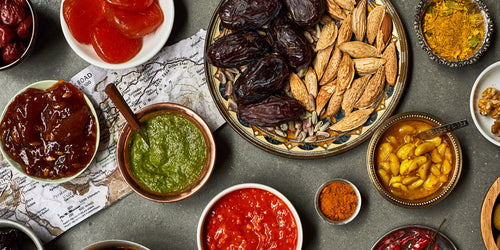Your Cart is Empty
There’s always “armchair travel,” which used to be consist of flipping through the pages of travel guides and dreaming. But kitchen travel is more fun—and edible. All you need is a good cookbook.
Food-writer Anya von Bremzen and photographer Megan Fawn Schlow have done a lot of the work for you with their inspiring book,Paladares: The Private Restaurants of Cuba. Together, they have documented dozens of a particular type of eatery called a paladar, with stunning photography and fascinating stories.
As opposed to a State restaurant, a paladar may be owned and operated by private citizens, previously impossible under Fidel Castro’s iron-fisted regime, when absolutely everything was government-run. In the mid-1990’s, restrictions were lifted to make certain businesses legal, including small restaurants, bars and cafés.
At first these little enterprises featured meals served exclusively in family homes. No more than 12 chairs were permitted, and at least 2 family members had to be involved. When rules were loosened to allow up to 50 seats, many paladares gradually began to resemble chic clubs, at least in Havana. In the countryside, paladares can be somewhat more humble.
Traditional Cuban fare is often on paladar menus, such as meaty braised ropa vieja and picadillo; crisp-roasted pork; many variations on beans and rice; and fried ripe plantains. But more and more, there’s an interest in new flavor combinations—a Caesar salad with tamarind; duck with dried figs and apricots; okra curry with papaya. Modern takes on ceviche and gazpacho are all the rage. Influences come from everywhere and from audacious experimentation, as a form of artistic expression.
Creativity is often challenged by shortages of goods. Basic ingredients like oil, salt and flour are frequently, suddenly unavailable. Beef is nonexistent (unless you know where to ask) and fish or shellfish is traded under the radar. Organic fruits and vegetables are abundant, though. Cuban folks are extremely resilient and resourceful, however, so the paladar menu may simply change from day to day.
The book features enlightening profiles and interviews of paladar proprietors, some who never thought of becoming restaurateurs. Out of necessity, to earn a living, they have made their establishments welcoming, lively and nurturing. Paladar food is bright and satisfying, rivaling the best of restaurants worldwide, despite conditions that are less than ideal. The irrepressible Cuban spirit always manages to find a way to celebrate, to invent and to spread joy.
From the paladar to your kitchen
Pumpkin Flan

Pumpkin shows up in a lot of savory Cuban dishes—in rice or in soups, for instance. Here it is used for dessert in the form of a dense caramel flan. Flan, always made with canned condensed milk, is universally adored, and this one is rather special. Get the recipe.
Tamarind Caesar Salad
Javier Gomez, the chef-owner of paladar Elite, took the concept of Caesar Salad and made it his own, using peppery organic greens. Anchovy fillets, Parmesan, and croutons align with classic versions, but the clever addition of sweet-sour tamarind to the dressing makes it unique. You might add a splash of fish sauce from the Snuk pantry. Get the recipe.
Okra Curry with Papaya
The popularity of okra shows the African influence on Cuban cuisine. A spoonful of curry powder, beloved throughout the Caribbean, gives this delightful vegetarian dish a welcome spicy punch, while papaya and lemon juice provide acidity. Alexis Alvarez Armas is the creative cook (he’s also a filmmaker and novelist) who came up with the recipe. Get the recipe.
A Refreshing Mojito
The mojito is the quintessential Cuban cocktail—tall and icy—and very welcome on a warm day. Mint, lime juice, good rum and a dash of bitters is all you need (along with a spoonful of sugar and a splash of soda), but it takes an expert to make a perfect one. In Havana, go to the bar El Floridita for an excellent rendition. Get the recipe.
Delicious Duck with Figs and Apricots
Slow-cooked duck legs emerge from the oven meltingly tender, but with a crispy exterior. Orange juice, white wine and dried fruit are simmered for the luscious sauce. The recipe is adapted from a dish served at the upscale paladar El Atelier. Get the recipe.
Coconut Pasteles
It’s hard to resist this traditional sweet, sold everywhere in Havana. The filling is nothing more than sweetened shredded coconut wrapped in a square of flaky pastry, but it is deeply satisfying—perfect with a strong cup of Cuban coffee. Get the recipe.








